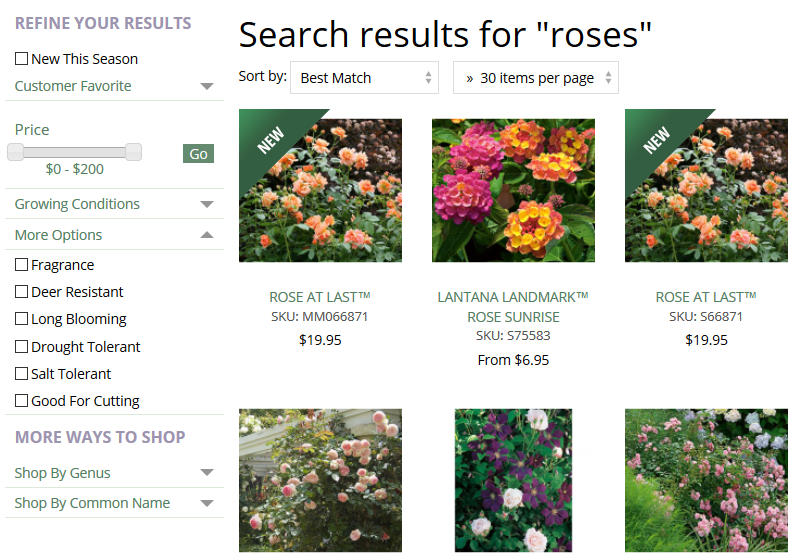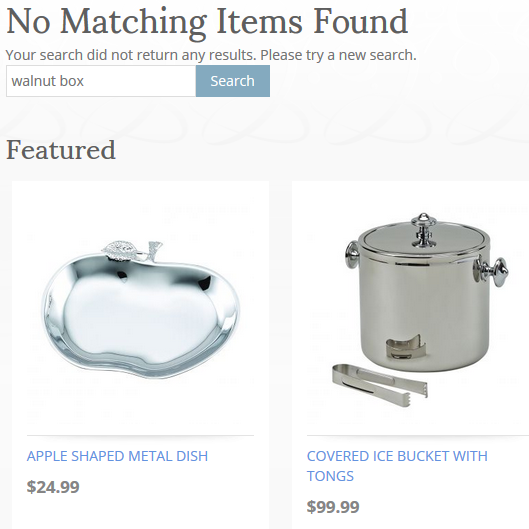Data indicates that customers who arrive on your site ready to search for something are more likely to convert than those who come just to browse. On-site searching plays a role in as much as 40% of online purchases, so it’s essential that your site offers fast, useful search tools to help customers find what they are looking for. Pay equal attention to search design – such as placement, colors, and calls-to-action, as to functionality – such as facets, filtering, and spelling suggestions.
A cardinal rule of ecommerce design is to make navigation as intuitive and seamless as possible. Search is no different – your search bar should be easy to locate as soon as a customer lands on your homepage.
Achieving this may involve:
- prominent placement in the top center of your header
- highlighting the search bar in a contrasting color
- using an unconventional, but intuitive, call to action
- buttons that match your contextual design

How you present results to customers is an equally important component of design. Filter the results page in ways that suit your products. These include conventional filters, like category, color, style, brand, model, etc., as well as ones specific to your catalog and which reflect how customers browse your site. Determining what unconventional filters to use may require testing and review of analytic data, but one place to start is to consider product details. Any product specification deemed important enough to list in the description should also be available as a filter.
Consider how customers search for items and refine their searches. As many as 25% of customers will refine their initial search to get better results, so it is important to offer them the right options to effectively narrow their queries. Is your clearance merchandise particularly popular, or do customers narrow searches to focus on sale prices or new items? What effect does popularity have on customer intent to purchase? Add search filters for new, clearance, or sale items; allow sorting by social rankings such as most popular or best sellers. This will forestall any frustration customers may encounter with not finding their exact item immediately.
To offer useful search to your customers, you need the back end functionality to support it. Use a method, like Solr, that indexes your data and allows you to group items together under in variety of ways. This improves overall search performance and is more likely to provide customers with an array of legitimately useful results. Fuzzy searches, for example, will return more relevant results and provide a selection of results to further filter. Additionally, employing tools that intelligently autocomplete searches or make suggestions based on incorrect spelling will ensure customers find results that match their query. Even more complex, semantic-based results aim at user intent – whether very specific or very vague – and can lead to better conversion rates (and lower cart abandonment rates) as customers are more likely to find the item they were seeking.
For all that you do to implement effective design and useful search functionality, make sure that every search provides some results – even if no items match a query. Never leave a customer with a search results page that simply says ‘No results found.’ Provide upsells, related products, or display matching but temporarily sold out items – content that will keep them engaged in the search process and prompt them to continue browsing until they make a purchase.

Moreover, use site search data to improve your ecommerce site. When coupled with accurate tracking from Google Analytics, this data can be powerful, highly useful information. It can help you determine future AdWords campaigns, more effective ways to merchandise products, and how to rethink the customer experience to improve conversions and reduce cart abandonment. But to unlock that data, you need well-designed site search with the backend capability to provide results your customers are looking for.


